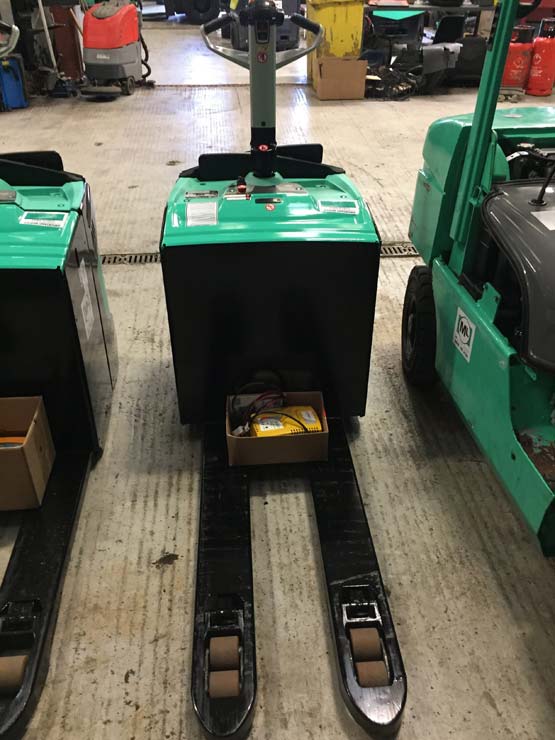Forklifts have been improving the way in which warehouses and factories operate for over a century. Although they weren’t dubbed ‘forklifts’ for some time, they were still large, heavy pieces of machinery used to lift and transport a number of products.
Over the years, forklifts have continued to help operations run as smoothly as possible across a number of industries, but they haven’t always looked like the vehicles we use today and nor have they always had the same capabilities.
In this article, we’ll be detailing the evolution of the humble forklift, from being used on farms and during World War One to improving efficiency and productivity throughout millions of warehouses around the globe, forklifts shouldn’t be underestimated as a piece of effective material handling equipment.
The original, early forklift trucks
In 1913, engineers looked into the invention of equipment that would be able to lift large, heavy loads with very little trouble and so, the first forklift truck was constructed. Unlike the vehicles of today, the early fork truck had a horizontal and vertical handling complete with a small crane that was directly fitted to the machine.
By 1917, the Clark Material Handling Company introduced a similar piece of equipment, dubbed the ‘Tructractor’. This was arguably the first forklift truck, made readily available, in the world. With the outbreak of the First World War looming, this specific truck was made with factories and warehouses in mind rather than for use in and around the farm.
In addition to it being one of the first forklift trucks for use in more industrial settings, it was also the first seated counterbalanced vehicle of its kind. As word got out about this brand new, innovative invention, its popularity soared and production increased in order to meet growing demand.
Forklift popularity boomed in the 1920’s
As forklift popularity increased, engineers started to make the forklift truck more powerful together with fitting the new vehicles with additional features. The earlier forklifts were weak in comparison to the updated machines, so in a bid to sort the problem, hydraulic parts were introduced.
By 1920, most forklifts were fitted with these hydraulic components and by 1923, the vertical lifting cantilever became a standard feature. The 1920’s were also responsible for introducing shortened wheelbases, welded joints, tilting masts and even an increased number of electronic parts, components and controls.
Forklifts started to go mainstream
In the early 1900’s pallets came in a number of different shapes and sizes, making it difficult for even the most modern of forklifts to lift and transport loads safely. As the popularity of forklifts picked up by the mid-1920’s, pallet shapes and sizes needed to be standardised. But it wasn’t until the 1930’s that this standardisation occurred.
These changes were made, forklifts became increasingly more mainstream as they were now a lot more convenient and easy to use than they were initially. Many different sectors and industries saw the benefits of using forklifts to enhance operations.
With that, forklifts were being mass-produced and the price of the machines started to level off. As this trend became more noticeable, more emphasis was being placed on advancing forklift technology.
Forklift technology saw major advancements
In the years that followed, forklift technology has gone from strength to strength, advancing in a number of ways. The early forklift blazed the trail for the machines we have today, ensuring all of their capabilities enhance and improve warehouse operations across the world and for many years to come.
Since their introduction, forklifts have since been manufactured with rolling cages, backrests on seats and barriers on masts to stop loads from toppling backwards. As well as protecting the safety of forklift operators, they’ve also been constructed with the environment in mind. In the beginning, forklift trucks were powered by internal combustion engines, but by the 1950’s, battery-powered forklifts became far more mainstream together with LPG machines.
In recent years, forklifts have been designed to be powered by lithium ion batteries, all in a bid to make even the most eco-friendly electric forklift more effective and efficient. However, even in this modern age, diesel-powered forklifts are still dominating the market, despite calls for warehouse owners to consider more environmentally-friendly alternatives.
The forklifts available today
The forklift technology available today can be traced all the way back to the industrial revolution and so we owe that era a great deal with regards to providing a solid, workable foundation on which fork truck machinery can develop and advance.
In addition to being used across a number of different industries, they’re also used to participate in forklift rodeos across America, where challenges are set and tricks need to be done in order for competitors to be in with a chance of winning their very own forklift.
Even 100 years down the line, forklifts continue to help warehouse operations run as smoothly as possible together with entertaining material handling experts and forklift fanatics across the world. As they become safer, more efficient and eco-friendly, business owners will always look to forklifts to help employees be more productive which, in turn, will increase profits.
Refurbished Forklifts are proud to be able to provide our customers with high-quality, reliable, used forklifts. Whether you need an electric forklift, an LPG fork truck or a diesel-powered machine, you’ll always be able to look to us for a powerful, robust solution. You’ll be able to choose from a number of different makes and models, all carefully reconditioned to an excellent standard for your absolute peace of mind. For more information, get in touch with a member of our team today – we’re always happy to help.







